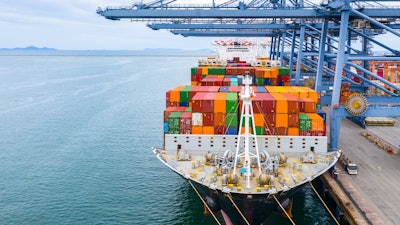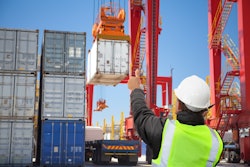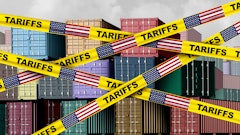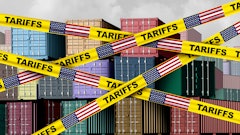
ITS Logistics’ ITS Logistics US Port/Rail Ramp Freight Index reveals that operations at most U.S. ports are running at normal levels, with exceptions for smaller ports facing strain from rising project freight imports. While container volumes reached record highs at key entry point Port of Los Angeles in June, frontloading trends and tariff volatility leave a lot of uncertainty for the remainder of 2025.
“Congestion, trucking operations, equipment availability, and distribution center receiving capacity are absorbing inbound container flow and are at normal levels,” says Paul Brashier, VP of global supply chain for ITS Logistics. “However, nearshoring efforts and renewed emphasis on domestic manufacturing have driven a recent uptick in project freight that could strain specialized equipment capacity, especially for hazmat, oversized, and breakbulk cargo.”
Key takeaways:
· Overall U.S. container volume for June was up 1.8% month-over-month to 2,217,675 TEUs, falling short of expectations for another major volume surge ahead of the Trump Administration’s July 9 tariff deadline. Even still, the Port of Los Angeles recorded its busiest June on record, citing an 8% increase from 2024 volumes. The rush to beat tariff deadlines — which have now been postponed to Aug. 1 for several countries who have not yet reached trade deals with the United States — has resulted in multiple inventory frontloading events that industry experts say have triggered an early peak season. At a time traditionally marked by rising imports of fall and winter retail goods, stabilizing operations have many industry leaders worried about market health for the remainder of 2025.
· Compounding this uncertainty is the ongoing volatility of U.S. tariff policies, which has led many shippers to quickly pivot their sourcing strategies, often shifting countries of origin within a matter of months rather than years. This rapid response has prompted the use of alternative North American entry points and new ocean carrier partnerships, reshaping traditional freight flow patterns and requiring heightened logistical agility.
· Despite recent volume spikes, inland transportation drayage rates remain below pre-pandemic levels, providing short-term relief for shippers but increasing pressure on the trucking market. This dynamic has prompted several larger, established drayage providers to exit the industry, further limiting capacity. ITS Logistics recommends that shippers use this moment of stable pricing and relative operational calm to evaluate and establish long-term strategic partnerships.
“Every transportation provider wants your business right now, but only a few are willing to go above and beyond to make themselves a competitive advantage for your operations,” Brashier says. “Prioritizing factors such as financial stability, comprehensive visibility, operational expertise, and access to extensive North American networks will be essential for navigating the uncertainties of the coming months.”




















